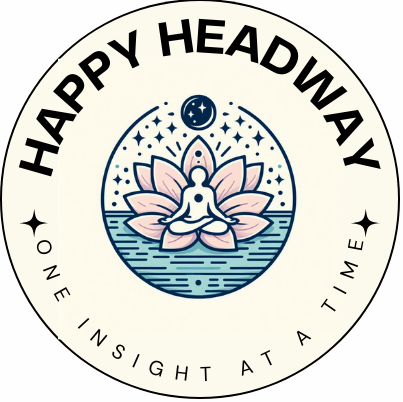Mindfulness has become a widely embraced practice for people seeking to cultivate greater peace, clarity, and well-being. While it may seem like a trendy buzzword, mindfulness is actually a deeply rooted practice with a long history, and its benefits for mental and physical health are well-documented. Whether you’re curious about mindfulness, looking to reduce stress, or interested in cultivating a more present and aware life, this article a beginners guide to mindfulness will walk you through the basics.
Introduction to Mindfulness
Definition of Mindfulness
Mindfulness is the practice of being fully present and aware of where you are and what you’re doing, without being overly reactive or overwhelmed by what’s happening around you. It involves paying attention to your thoughts, feelings, bodily sensations, and the environment around you, in a non-judgmental manner. Essentially, mindfulness is about living in the moment and being conscious of each experience as it unfolds.
The Importance of Mindfulness
It’s so easy to feel overwhelmed by daily tasks, future worries, and past regrets. Practicing mindfulness helps bring you back to the present moment, fostering a sense of calm and clarity. It has been shown to reduce stress, enhance focus, improve emotional regulation, and contribute to overall well-being. For beginners, mindfulness offers a way to step out of autopilot mode and engage more deeply with life.
Historical Background and Origins
Mindfulness has roots in various ancient traditions, particularly in Buddhism, where it forms the core of meditation practices aimed at attaining enlightenment. However, similar concepts of mindfulness can be found in other philosophical and spiritual traditions like Hinduism, Taoism, and Stoicism. In the West, mindfulness gained popularity through the work of Jon Kabat-Zinn, who developed the Mindfulness-Based Stress Reduction (MBSR) program in the late 1970s, blending Buddhist mindfulness principles with modern psychology to help people cope with stress, anxiety, and chronic pain.
Benefits of Mindfulness for Mental and Physical Health
The benefits of mindfulness extend far beyond simply feeling calmer. Numerous studies have shown that mindfulness practice can significantly improve both mental and physical health. Here are some key benefits:
- Reduced stress: Mindfulness helps lower cortisol levels, the stress hormone, promoting relaxation.
- Improved mental clarity: Mindfulness enhances concentration and attention span, helping you stay focused on tasks.
- Better emotional regulation: It encourages emotional balance and helps you respond to situations rather than react impulsively.
- Improved physical health: Mindfulness has been linked to lower blood pressure, improved sleep, and even reduced inflammation.
- Enhanced mental well-being: Regular mindfulness practice can reduce symptoms of anxiety, depression, and PTSD.
Getting Started with Mindfulness
How to Do Mindfulness for Beginners
Starting a mindfulness practice is easier than you might think. It doesn’t require any special equipment or a lot of time—just a willingness to be present. Here’s a simple way to begin:
- Find a quiet spot: Choose a place where you can sit comfortably without being disturbed for a few minutes.
- Set a time limit: For beginners, start with just 5 to 10 minutes of mindfulness practice.
- Focus on your breath: Close your eyes, breathe naturally, and focus on the sensation of your breath moving in and out.
- Observe your thoughts: When your mind wanders, gently bring your attention back to your breath. Don’t judge yourself for being distracted—that’s part of the practice.
Simple Mindfulness Exercises
Here are a few mindfulness exercises that are particularly accessible for beginners:
- Body scan meditation: Focus your attention on different parts of your body, from your toes to your head, noticing any sensations or areas of tension.
- Mindful eating: Take time to savor your food by eating slowly and paying attention to the taste, texture, and smell of each bite.
- Mindful walking: As you walk, focus on the sensation of your feet touching the ground, the movement of your legs, and the rhythm of your steps.
- Mindful breathing: Whenever you feel overwhelmed, take a few moments to focus solely on your breath, noticing how it feels to breathe in and out.
Incorporating Mindfulness into Daily Routines
Mindfulness isn’t limited to formal meditation sessions. You can incorporate mindfulness into your daily activities by paying attention to what you’re doing at any given moment. Whether you’re brushing your teeth, drinking coffee, or folding laundry, try to fully immerse yourself in the activity without letting your mind wander. The more you practice, the easier it becomes to stay present.
Overcoming Common Challenges for Beginners
Mindfulness can seem deceptively simple, but beginners often face challenges like restlessness, boredom, or a wandering mind. Here are some tips to overcome these common obstacles:
- Start small: It’s okay if you only practice for a few minutes each day. Consistency is more important than duration.
- Be patient: Mindfulness is a skill that develops over time, so don’t expect immediate results.
- Let go of expectations: Don’t strive for a perfect experience—mindfulness is about noticing whatever happens, without judgment.
- Use reminders: Set reminders on your phone or leave sticky notes around your home to prompt mindfulness moments throughout your day.
How to Start Learning Mindfulness
Steps to Initiate Your Mindfulness Journey
Beginning your mindfulness journey is a personal process, but these steps can help guide you:
- Set an intention: Why do you want to practice mindfulness? Defining your purpose will keep you motivated.
- Start with short sessions: Begin with just a few minutes a day and gradually increase the duration as you become more comfortable.
- Find a quiet space: While mindfulness can be practiced anywhere, having a dedicated space can help build a routine.
- Reflect on your experience: After each session, take a moment to reflect on how you felt during the practice. This can deepen your awareness.
Resources Like Books, Apps, and Courses
There are many resources available to help beginners learn mindfulness. Some popular options include:
- Books: Wherever You Go, There You Are by Jon Kabat-Zinn and The Miracle of Mindfulness by Thich Nhat Hanh are excellent starting points.
- Apps: Apps like Headspace, Calm, and Insight Timer offer guided mindfulness meditations for beginners.
- Courses: Online platforms like Coursera and Udemy offer structured mindfulness courses, while MBSR programs provide in-depth training.
Finding a Mindfulness Community or Group
Joining a mindfulness group or community can be incredibly supportive, especially for beginners. Look for local meditation groups, mindfulness workshops, or online communities where you can connect with others on the same journey.
Setting Achievable Mindfulness Goals
When starting out, it’s important to set realistic and achievable goals. Start small, with a daily 5-minute mindfulness practice, and gradually work your way up. You might also set goals for incorporating mindfulness into daily tasks, such as mindful eating or mindful walking.
Exploring the 5 R’s of Mindfulness

The 5 R’s of mindfulness offer a framework for understanding key elements of the practice. Let’s break them down:
Recognition: Becoming Aware of Your Thoughts and Feelings
The first step in mindfulness is simply recognizing your thoughts and emotions as they arise. It’s about observing without trying to change anything. Recognition helps bring awareness to automatic patterns of thinking and behavior, allowing you to make more conscious choices.
Resilience: Building Mental and Emotional Strength
Mindfulness helps build resilience by training the mind to stay grounded during challenging times. When you practice mindfulness, you learn to manage stress and emotions with greater ease, leading to a stronger, more resilient mindset.
Reflection: Taking Time to Ponder Your Experiences
Reflection is an important aspect of mindfulness because it encourages you to think deeply about your experiences. After a mindfulness session or during quiet moments, take time to reflect on what you’ve noticed, how you felt, and any insights that arose.
Relaxation: Techniques to Reduce Stress and Promote Calm
Mindfulness can also be a powerful tool for relaxation. By focusing on the present moment and letting go of tension, you can activate the body’s relaxation response, reducing stress and promoting a sense of calm.
Recalibration: Adjusting Your Mindset and Reactions
Mindfulness encourages recalibration by helping you shift your perspective. When you notice your reactions to situations, you gain the ability to adjust how you respond. Over time, this leads to a more balanced and thoughtful way of approaching challenges.
The 7 Principles of Mindfulness
1. Non-Judging: Observing Without Evaluation
One of the foundational principles of mindfulness is non-judging. This means observing your thoughts, emotions, and sensations without labeling them as “good” or “bad.” Instead of reacting, you simply notice what’s happening, which fosters acceptance and self-compassion.
2. Patience: Understanding That Growth Takes Time
Mindfulness is a gradual process that requires patience. Just like any other skill, it takes time to develop. By embracing patience, you allow yourself the space to grow without rushing or forcing the process.
3. Beginner’s Mind: Approaching Situations with Openness
Beginner’s mind is about approaching each moment with openness and curiosity, as if experiencing it for the first time. This principle helps you stay present and prevents you from making assumptions based on past experiences.
4. Trust: Developing Confidence in Yourself
Trusting yourself and your ability to navigate life’s challenges is an essential part of mindfulness. It’s about developing confidence in your own experiences and intuition, and trusting the process of mindfulness, even when it feels unfamiliar or difficult.
5. Non-Striving: Embracing What Is, Rather Than Striving for Perfection
Mindfulness is not about achieving a particular outcome or state of mind. Non-striving means letting go of the need to control or perfect your experience. Instead, you focus on being present and accepting things as they are.
6. Acceptance: Acknowledging Things as They Are
Acceptance is a key principle of mindfulness. It involves acknowledging your thoughts, feelings, and experiences without trying to change or resist them. By accepting things as they are, you reduce inner conflict and create space for growth and healing.
7. Letting Go: Releasing Attachment to Certain Thoughts and Feelings
Letting go is the practice of releasing attachment to specific thoughts, emotions, or outcomes. It’s about recognizing that holding on to certain ideas or feelings can cause suffering and choosing to release them in favor of a more balanced and peaceful state of mind.
Conclusion: Embrace the Journey
Mindfulness is a practice that offers immense benefits for both beginners and seasoned practitioners. Whether you’re looking to reduce stress, improve focus, or simply live a more present life, mindfulness can help you achieve these goals. By starting small, practicing consistently, and embracing the principles of mindfulness, you’ll find that this practice becomes a valuable and enriching part of your life.
If you’re ready to begin, remember that mindfulness is not about achieving perfection—it’s about being present in the journey. The beauty of mindfulness is that it meets you where you are, guiding you toward greater awareness, peace, and well-being one mindful breath at a time.







